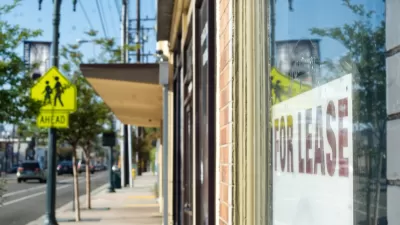As peak harvest season approaches, about a third of small farmers expect that their short-chain food business will not survive to continue production in 2021.

In an interview with chef and restaurant co-owner Dan Barber, Karen Stabiner examines the state and fate of small farmers, and what consumers can do to support them and reshape U.S. food culture. According to a recent survey of 240 farmers conducted by Barber and Stone Barns Center for Food and Agriculture, between 30% and 40% of farmers predict that a potential 50% decrease in sales at restaurants and farmers' markets, and bankruptcy by the end of 2020.
Alternative means for selling produce like boxes and delivery, while successful in the short-term, won't be a solution in the summer during peak harvest. Farmers can't sustain the volume and pay for the cost of labor, reports Stabiner. If farmers' fears of bankruptcy are realized, many will not recover. "If they’re right, the virus will take out much of a generation and leave the market ripe for takeover by larger operations," writes Stabiner.
"This is a moment for standing up and digging in for what we want, and not allowing big food to take the market back," Barber says. Right now, that includes calling in all forces to help with the summer harvest, including out of work restaurant employees. Barber's vision includes a redefinition of the 'farm to table' framework where farmers and restaurants work together to prepare the harvest on a local scale.
Barber reminds consumers to vote with their dollars by supporting local farmers and restaurants that enable this vision of a redefined food culture and find innovative ways to get farmers' food on the table.
FULL STORY: Nearly a third of small, independent farmers are facing bankruptcy by the end of 2020, new survey says

Alabama: Trump Terminates Settlements for Black Communities Harmed By Raw Sewage
Trump deemed the landmark civil rights agreement “illegal DEI and environmental justice policy.”

Planetizen Federal Action Tracker
A weekly monitor of how Trump’s orders and actions are impacting planners and planning in America.

The 120 Year Old Tiny Home Villages That Sheltered San Francisco’s Earthquake Refugees
More than a century ago, San Francisco mobilized to house thousands of residents displaced by the 1906 earthquake. Could their strategy offer a model for the present?

BLM To Rescind Public Lands Rule
The change will downgrade conservation, once again putting federal land at risk for mining and other extractive uses.

Indy Neighborhood Group Builds Temporary Multi-Use Path
Community members, aided in part by funding from the city, repurposed a vehicle lane to create a protected bike and pedestrian path for the summer season.

Congestion Pricing Drops Holland Tunnel Delays by 65 Percent
New York City’s contentious tolling program has yielded improved traffic and roughly $100 million in revenue for the MTA.
Urban Design for Planners 1: Software Tools
This six-course series explores essential urban design concepts using open source software and equips planners with the tools they need to participate fully in the urban design process.
Planning for Universal Design
Learn the tools for implementing Universal Design in planning regulations.
Clanton & Associates, Inc.
Jessamine County Fiscal Court
Institute for Housing and Urban Development Studies (IHS)
City of Grandview
Harvard GSD Executive Education
Toledo-Lucas County Plan Commissions
Salt Lake City
NYU Wagner Graduate School of Public Service





























